An Astronaut on the International Space Station Answers Students’ Questions
An Astronaut on the International Space Station Answers Students’ Questions
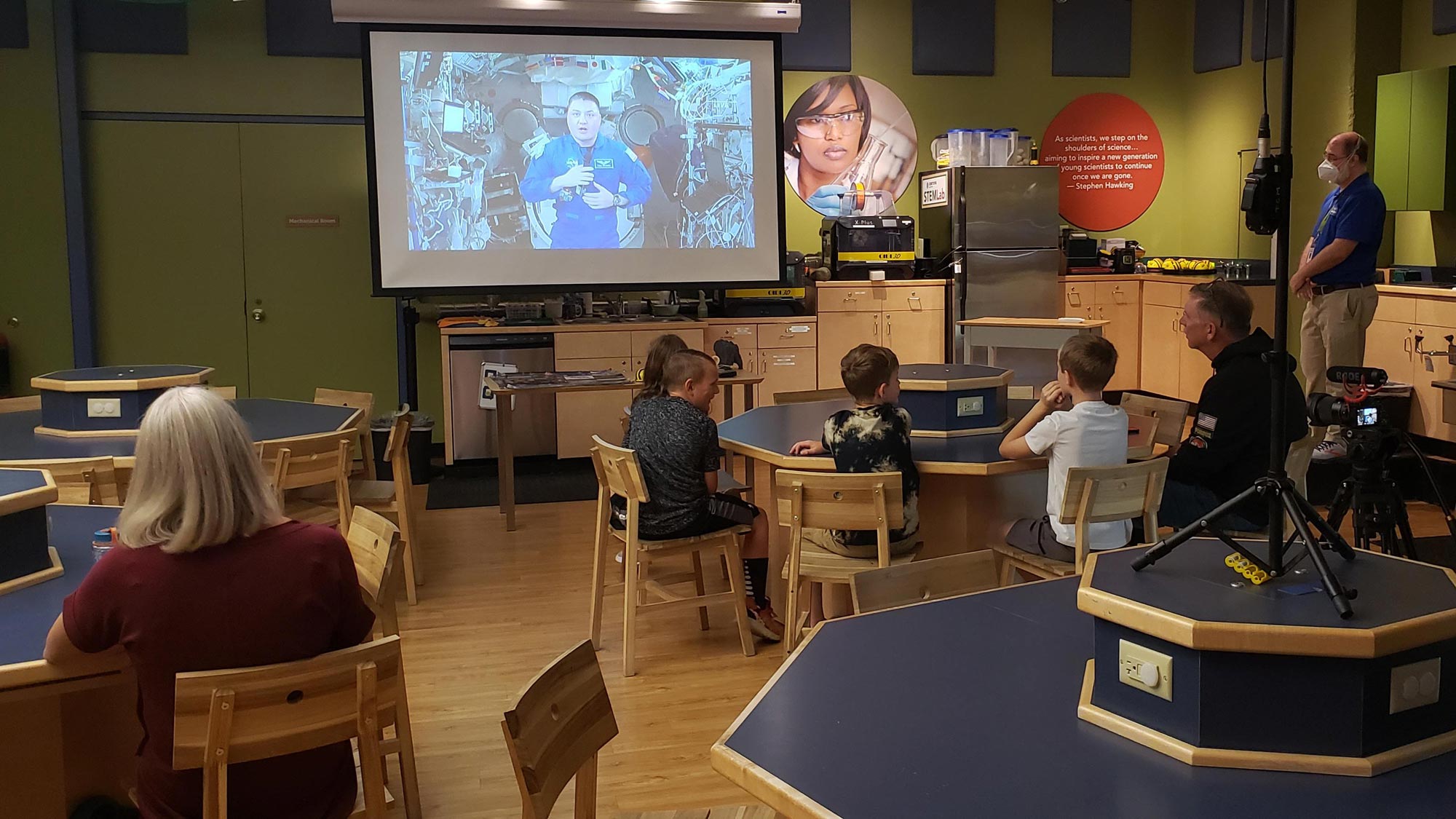
Astronaut Dr. Kjell Lindgren is no stranger to The Children’s Museum. He joined us at the museum when we opened Beyond Spaceship Earth—our permanent exhibit about the International Space Station (ISS). Dr. Lindgren is currently living and working on board the ISS (he’s scheduled to return to Earth in October 2022). Students from some of our member schools recently submitted questions about living in space. Dr. Lindgren answered them from the space station.
Here’s Dr. Lindgren’s answers to the students’ questions.
What qualifications did you have that helped get you chosen as an astronaut?
In order to be selected as an astronaut, and in order to be competitive as an astronaut, there are some very basic requirements. If you’re a pilot, it means 1,000 hours of flying in a high-performance jet. If you’re not a pilot—if you’re looking for a mission specialist job—it requires an advanced degree and years of work. But the bottom line is that right now, if you’re coming from the fields of science, technology, engineering, and math, that’s really where many of our astronauts come from. They have careers backgrounds in those fields because science and math is the language of space flight.
My personal background—I was a physician. Prior to that, I served in the US Air Force. BUt I’ve always had this dream of getting to live and work in low Earth orbit.
Have you ever been on a spacewalk?
I’m very grateful to have had the experience of getting to do two spacewalks. I did those during my last mission—in 2015. We did repairs on the outside of the space station. It’s a lot of hard work, a lot of training in the neutral buoyancy laboratory—a six million gallon pool we have in Houston that has a model of the space station in it where we learn how to do spacewalks. To get to use that training and to get to go outside and see the Earth and the outside of the space station in that amazing white space suit was an incredible experience.

What is your advice to young people dreaming about becoming involved in NASA’s space program?
First of all, you’ve got to make that goal. Make that goal and share that goal with your friends and family, and they will help you along the way. The thing that I can tell you right now is to read. Read about things that you’re interested in. Read about things that you're passionate about.
And then start to work towards that goal by doing small things that will ultimately help you achieve what it is that you hope to do. If you would like to come work with us at NASA, we would love to have you come and explore. But a big part of it is to find something that you are passionate about, that you’re interested in. While I had that larger goal of becoming an astronaut, I was also very passionate about serving my country—that’s why I joined the Air Force - and then also in serving my community. That’s one of the big reasons that I chose to go into medicine. It was a real privilege to be able to serve as an emergency medicine doctor in my community.
What is your favorite part about being an astronaut on the station?
It’s amazing to have fulfilled this lifelong dream to live and work in space. And even more, to get to do it a second time, and I’m very grateful for that. I think my favorite thing…now, floating is amazing…(but) getting to see the Earth from this perspective—to look down, to see the black, inky sky, and to see the Earth and places where I’ve lived, and visited, and places where I want to visit, those are all great. But, honestly, one of my favorite things is working with the amazing team that we have back in Houston and in mission control centers and universities and laboratories all across the country, and around the world. Getting to be a part of that team, working with some of the best and brightest people that we have in the United States and in our partner countries is truly an amazing, amazing thing—and one of my favorite things about being in space.
What’s the coolest thing you have seen on Earth while looking down from space?
It is absolutely amazing to look back at the Earth. (It’s) always beautiful. Always different, always changing. Different weather. Different seasons. Night and day. But my absolute favorite thing that I’ve seen up here is the Aurora. (It’s) incredibly beautiful—just wiggling rays of light: bright green and purples. Absolutely beautiful.
What is one thing that surprised you most about being up in space?
The thing that surprised me most is how quickly we become comfortable with floating, with this weightless environment. It’s something we don’t grow up with. We’ve never experienced it before in our lives. And yet, when we get up here - our brains are so amazing. They adapt to this idea that it’s normal to float. And so, within hours…within minutes…it feels very natural. We’re not good at it, initially. It takes time to get good at getting around and handling tools and everything, but the fact that our brains adapt to this idea of floating is absolutely amazing.
How do you communicate with your friends and family?
Back 20–25 years ago, the only way that astronauts were able to talk with their families back on the ground was with amateur radio—with a HAM radio. These days, we have a telephone system—Voice Over Internet Protocol—where I’m able to dial a cell phone number through my laptop computer and I’m able to call somebody on the ground on their cell phone. It’s absolutely amazing!
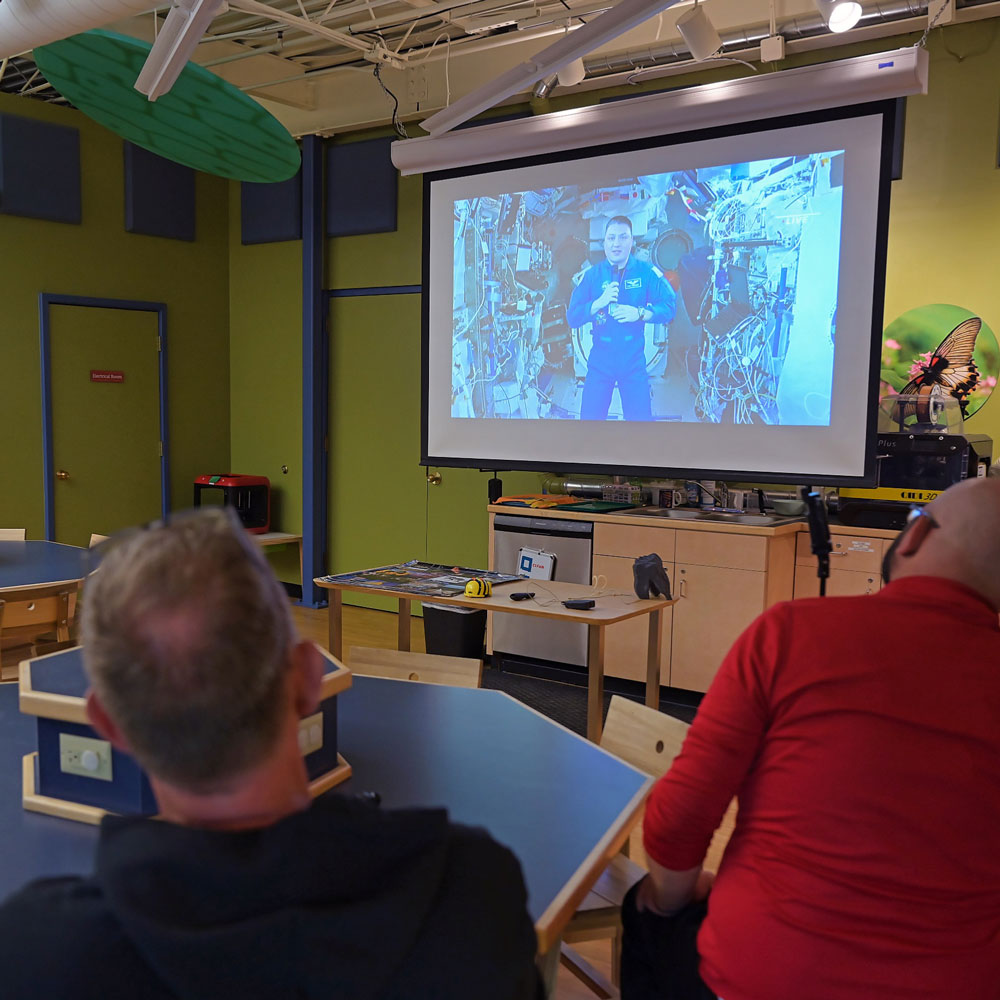
We get to have a video conference every week, for about an hour, hour and a half, with our families. And so those really help us to keep connected with our friends and family.
What is it like returning to Earth after a space mission?
That’s about six weeks away for us—we’ll be coming home in mid-October - and, of course, we are so incredibly excited to return home to our family (and) to be back with our friends. But it is challenging. We get very used to floating up here. We don’t feel gravity. When you get back to Earth, it’s like a kick in the pants. Gravity’s kind of a bummer. And so having to work against gravity to lift things—(even) to hold your head up—all of those things come along with some dizziness and body aches and pains. But within about two to four weeks, we’re feeling pretty much back to normal.
How does water behave in space?
Water is absolutely amazing. And we take advantage of this incredible orbiting laboratory to examine how fluids move and work in space.
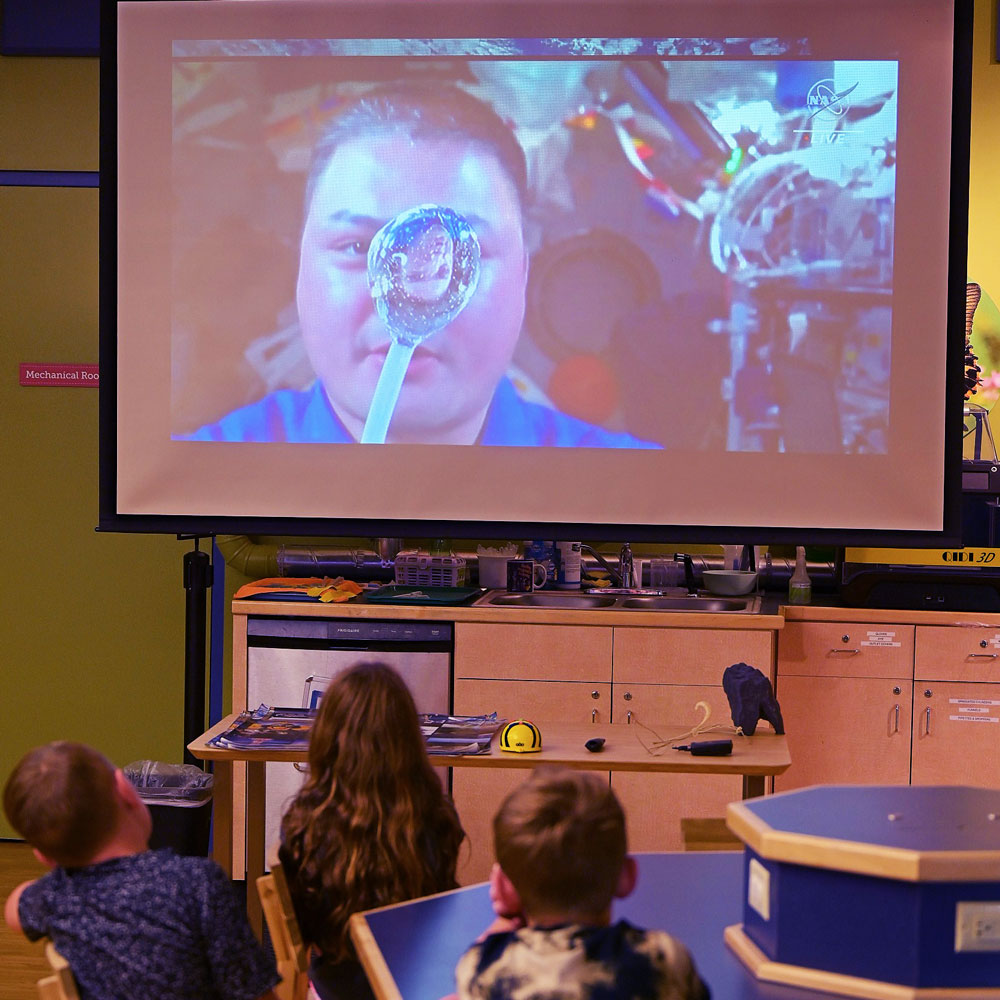
And so, here’s a little example. This is a drink bag. This is how we drink juice, or water, or coffee - depending on if it’s a hot drink or a cold drink—and you can see that if I push a little bit of water out here, it assumes the shape of a sphere. You can see how it’s shaking a little bit. I’ll release it from the straw here in a minute. The ventilation in here…the fans will start to push it around a little bit.
We don’t want it to go too far. I’ll see if I can blow it back in.
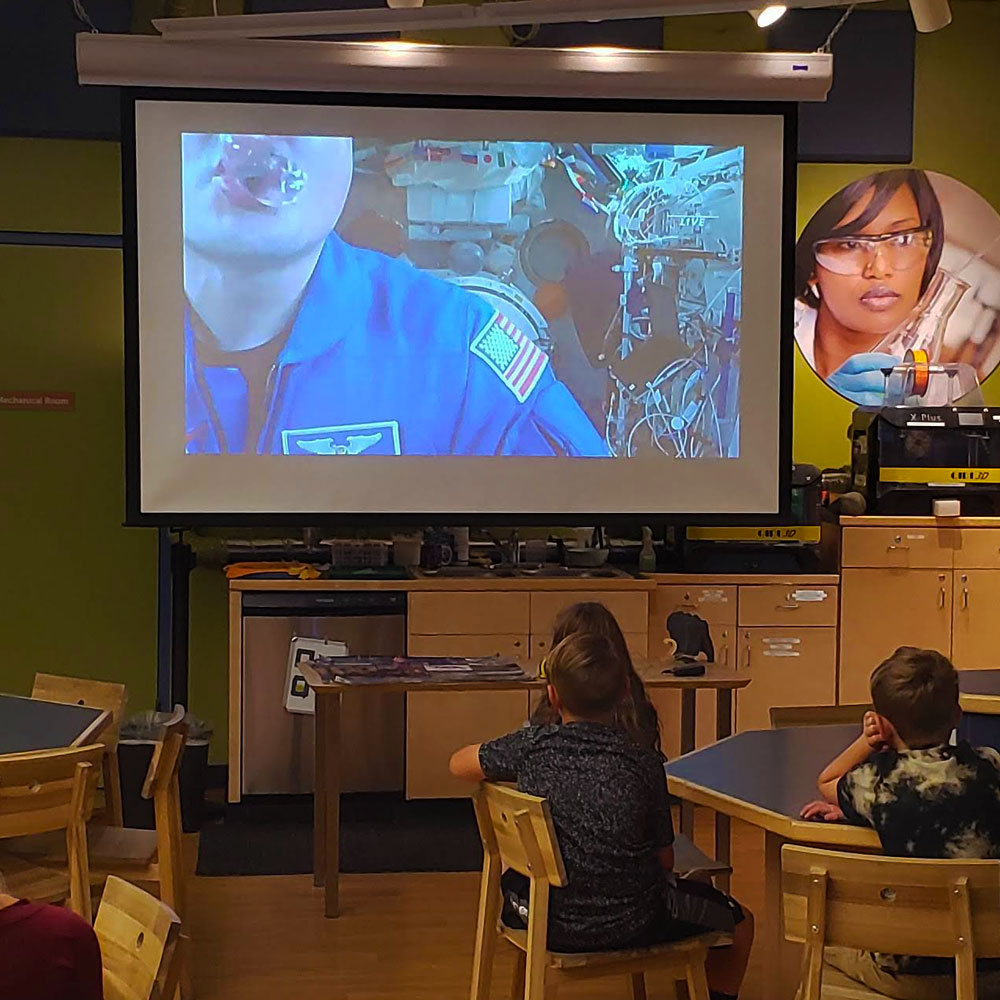
That was a little messier than expected.
How many personal items do you bring with you to outer space, and what types of items do you bring?
We are very fortunate in that we get to bring some things from home. Because we’re up here for a long period of time, we get to bring some things with us to remind us of home. A lot of us will bring pictures of our family. We’ll bring some little toys, just to see how they work in space. Here’s a Frisbee—I wanted to see if it works the same way as it does on Earth.

And I’ve got a small gnome that one of my sons carved at Scout camp. And so I brought that with me as a fun little reminder of our friends and family back home.
What food do you eat in space?
Food is incredibly important. A balanced, nutritious diet is important for us on the ground. It’s even more important for us up here on the space station. In the absence of gravity, our bodies tend to lose minerals from the bones and they become weaker. Our muscles become weak because we’re not working against gravity. Our heart’s cardiovascular system can become weaker, as well. And so we do exercises every day to help us counter those effects. But, food is an important part of trying to keep us healthy while we’re in space.
You saw the drink bag. We try to drink lots of water. It’s very important, both on the Earth and in space.
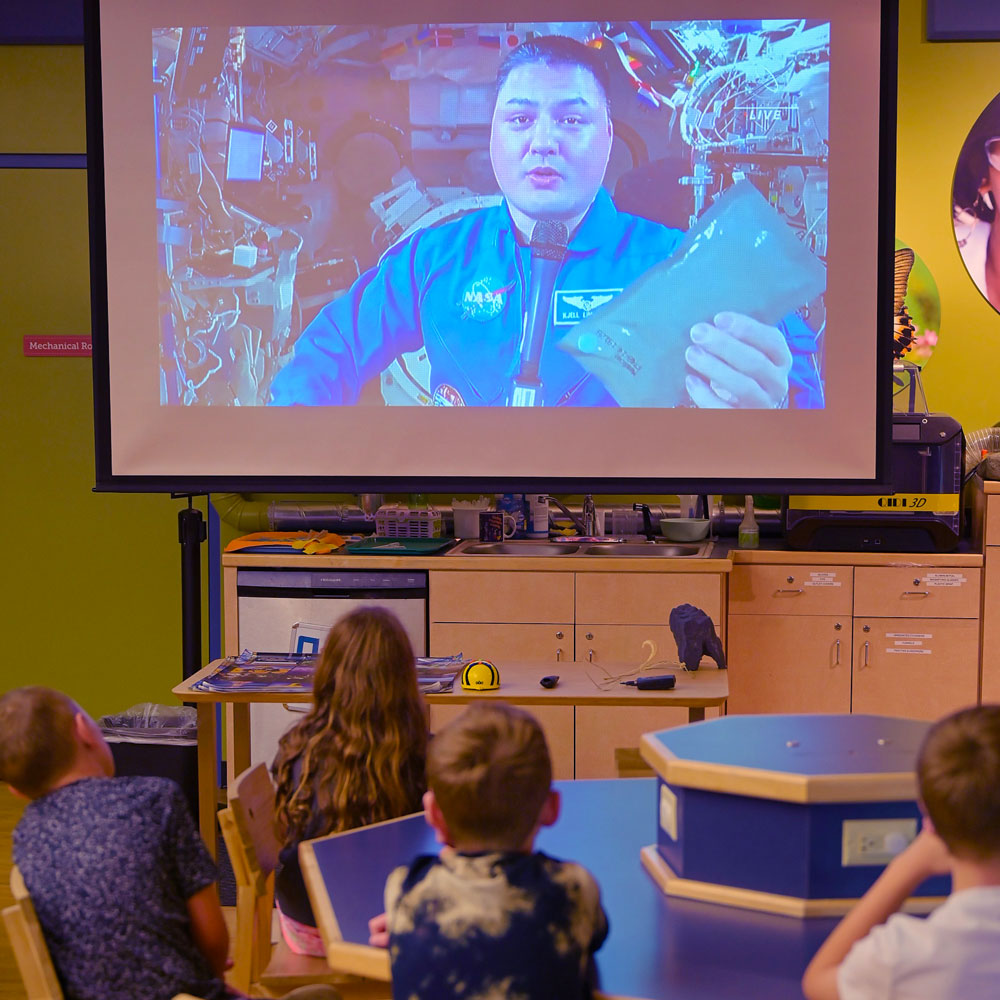
Here’s an example of one of our food items that comes in these kind of aluminized metal bags. This is meatloaf. That’s going to be my dinner tonight. It’s all precooked. We don’t cook with ingredients up here. It’s all cooked and then sealed up. It’s either exposed to radiation or high heat to kill off all of the bacteria so it’s shelf-stable and can be up here for some time before we eat it. For example, this (meatloaf), I’ll just put into our warming oven and that will warm that up to eat.

We have some food that’s dehydrated. Here’s an example. I already added some water to this. We have some meat and these are vegetables—this is asparagus. Again, we try to eat a balanced and very nutritious diet at every meal.
And finally, it’s also important to have a little bit of fun, too. Some of our food comes in these white bags. We tear that open, and - here we go—some candy coated chocolate peanuts! A little treat every once in a while is not a bad thing. We definitely don’t want to overdo it. But this can be fun, too. And it’s a little bit of a reminder of home.
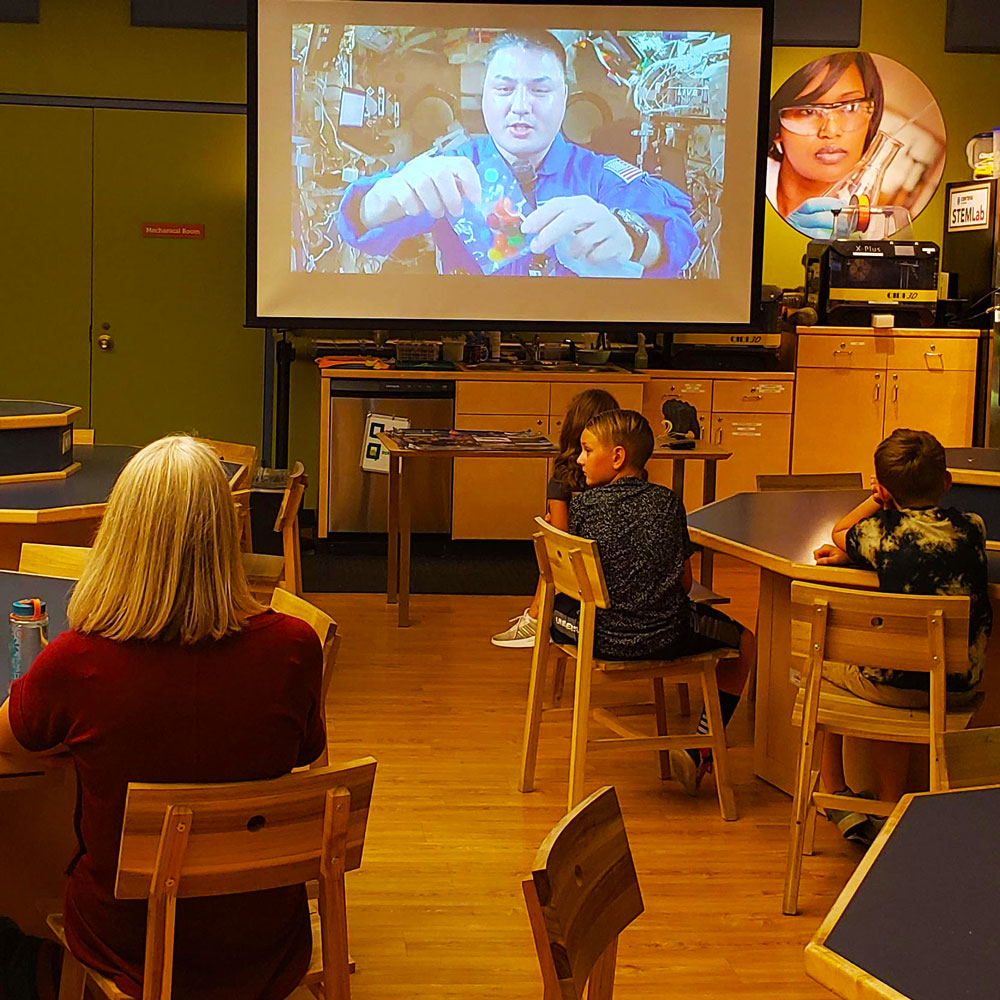
What do you do on the space station on your free time?
We work very hard, we work about 12 hours…we get up in the morning and have our morning conference at 7:30, and we work until our evening conference at 7:30 in the evening. But after those conferences, and on the weekends generally, we have some personal time.
I think all of us like to stay in touch with our families. We use the phone to call our families. But we love looking out the windows and taking pictures and video to share with our family and friends back home.
Do you get your own room on the space station?
We do have our own rooms! They’re about the size of a small closet and it’s the perfect place. It’s where we sleep in sleeping bags. It’s where we’ll answer email, and maybe talk on the phone. It’s our private place, but we also like to have fun together. Often, when we’re hanging out, we’ll hang out around the dinner table in the Galley.
Is space junk a problem for the station?
Space junk—or space debris—is a serious problem. As a space-faring community, we need to do a better job of—just like on Earth—taking care of the trash and having a plan for it. Our partners in the Department of Defense actually track that orbital debris and every once in a while, it looks like we could have a collision with some of those larger pieces of debris. So the space station will do an avoidance maneuver - basically a boost to change its orbit - to avoid that space debris. We do have to do those every once in a while. But it’s a reminder that if all of the space-faring countries want to use low Earth orbit safely, we need to take care of that environment.
What plants are you currently growing?
I love being a part of the plant science up here on the space station. I got to do it last time and I get to do it again, in an experiment called XROOTS. It’s where we’re actually growing plants in an enclosure that, instead of using soil, we are using hydroponics and aeroponics. So, basically spraying water or letting the roots sit in water.
We’re growing carrots, and onions, and leafy greens, and we’re really excited to see how these turn out. Because we’ve been growing plants for a long time, but I think this might be the first time we’re growing food crops. This is really important for long-duration space exploration—to have the ability to grow fresh food for consumption for these long duration missions.
Why did you choose to go into space?
I have wanted to be an astronaut for as long as I can remember. I think I was inspired by science fiction books and movies. And then, that dream was really locked in when I was in 2nd Grade. My teacher wheeled a television into our room and we watched a space shuttle launch in April of 1981. It became clear to me that this was actually a possibility.
The challenge of becoming an astronaut, and doing the things that we do up here, and the opportunity to explore, and the privilege of working with the incredible teams that we have at NASA and all over the world - it truly is a dream come true. And it’s a real privilege do get to do this job.

What is your least favorite thing about being in space? Why?
It’s kind of cramped quarters. We see the same faces every day. We have the same food available to us every day. All of those things are things that you get used to. It’s actually an amazing place to live. We are very well taken care of. And the views are incredible.
I would say, though, that my least favorite thing, of course, is being away from my family. Both in training—having to travel and being away from my family - and right now. You know, I’ve been away from my family for almost four months now. I think that’s definitely the toughest part. I’m looking forward to seeing them in a few weeks.
Concluding thoughts from Astronaut Dr. Kjell Lindgren
I wish you all the best. Work hard. Set a goal. And make your dreams come true.









